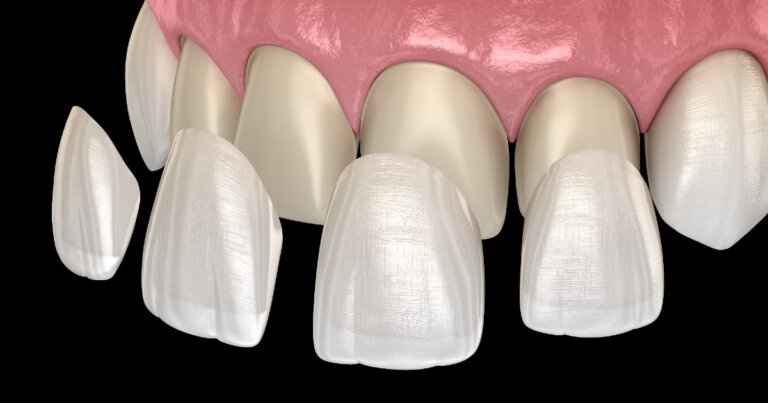Dental Veneers Home Care Instructions

What You Should Do After Your Dental Veneer Appointment
Dental Veneers offer a transformative solution for improving both tooth color and shape. By bonding a thin layer of porcelain or composite resin to the surface of your teeth, veneers provide a stunning, natural-looking smile makeover with minimal impact on your natural enamel. Following proper aftercare instructions is crucial to prolonging the life of your veneers and ensuring a smooth recovery.
Oral Hygiene After Getting a Dental Veneer
- Brush Twice a Day, Ideally After Meals: Brushing your teeth at least twice a day is essential, but for best results, brush after every meal. This keeps your teeth clean and prevents food particles from settling around your new veneer, reducing the risk of decay.
- Use Water or Mouthwash When You Can’t Brush: If you’re unable to brush after a meal, rinse your mouth with water or an antibacterial mouthwash to remove food debris. This minimizes the risk of cavities forming beneath the veneer. We recommend using Crest Pro-Health Densify Anticavity Fluoride Mouth Rinse for its cavity-fighting properties.
- Upgrade Your Toothbrush: A soft-bristled toothbrush, like the Curaprox CS5460 Ultra Soft Swiss Toothbrush, is gentle on your gums and dental veneer. Consider switching to an electric toothbrush, like the Philips Sonicare ProtectiveClean 6100, for more effective plaque removal.
- Floss Daily: Daily flossing helps remove plaque and food trapped around your veneer. Try GUM ButlerWeave Dental Floss, or if you find traditional floss challenging, use flossers like Sunstar GUM Advanced Care Flossers or GUM Proxabrush interdental brushes.
- Consider a Water Flosser: In addition to regular flossing, using a water flosser can improve gum health by flushing out particles left behind by floss and brushing. A great option is the Waterpik Aquarius Water Flosser. Use it daily for maximum benefit.
- Use Fluoride Toothpaste: Choose a toothpaste with a high fluoride content to reduce the risk of cavities around your veneer. Colgate PreviDent 5000 ppm Booster Plus Toothpaste is an excellent option for protecting your teeth.
Eating and Drinking After Your Veneer Placement
You can eat normally with a permanent dental veneer, but it’s best to avoid sugary foods and drinks that increase the risk of decay. Limit your intake of candies, sodas, and sweet syrups to protect your dental veneer.
Numbness After Your Procedure
You may experience numbness from the anesthetic for 2-3 hours post-procedure. During this time, avoid hot liquids and be careful not to bite your lip, cheek, or tongue.
Jaw Discomfort
Some patients experience temporary difficulty opening their mouth wide or mild muscle soreness after the anesthetic injection. This is called myogenic trismus, a muscle spasm caused by the injection. If this happens, follow our myogenic trismus home care guide for relief.
Pain, Sensitivity, or Swelling
It’s common to have mild tooth sensitivity to hot or cold temperatures for a few days after veneer placement. This sensitivity will subside quickly. Use Sensodyne Rapid Relief Toothpaste to alleviate discomfort, and take over-the-counter pain relievers such as ibuprofen (Advil) or acetaminophen (Tylenol). Ask your dentist about the proper dosage for your situation, but a combination of 1000mg Tylenol and 600mg Advil every 4-6 hours is often effective.
Follow-Up Dental Visits
If your dental veneer feels too high or your bite seems uneven, contact us for a complimentary adjustment. For long-term care, continue brushing and flossing daily, and schedule regular dental checkups and teeth cleaning every six months. These visits allow your dentist to monitor the health of your dental veneer and catch any potential issues early.
Have Questions?
If you have any concerns about your dental veneer or need further advice, don’t hesitate to contact us. We’re here to help you maintain a healthy smile!

